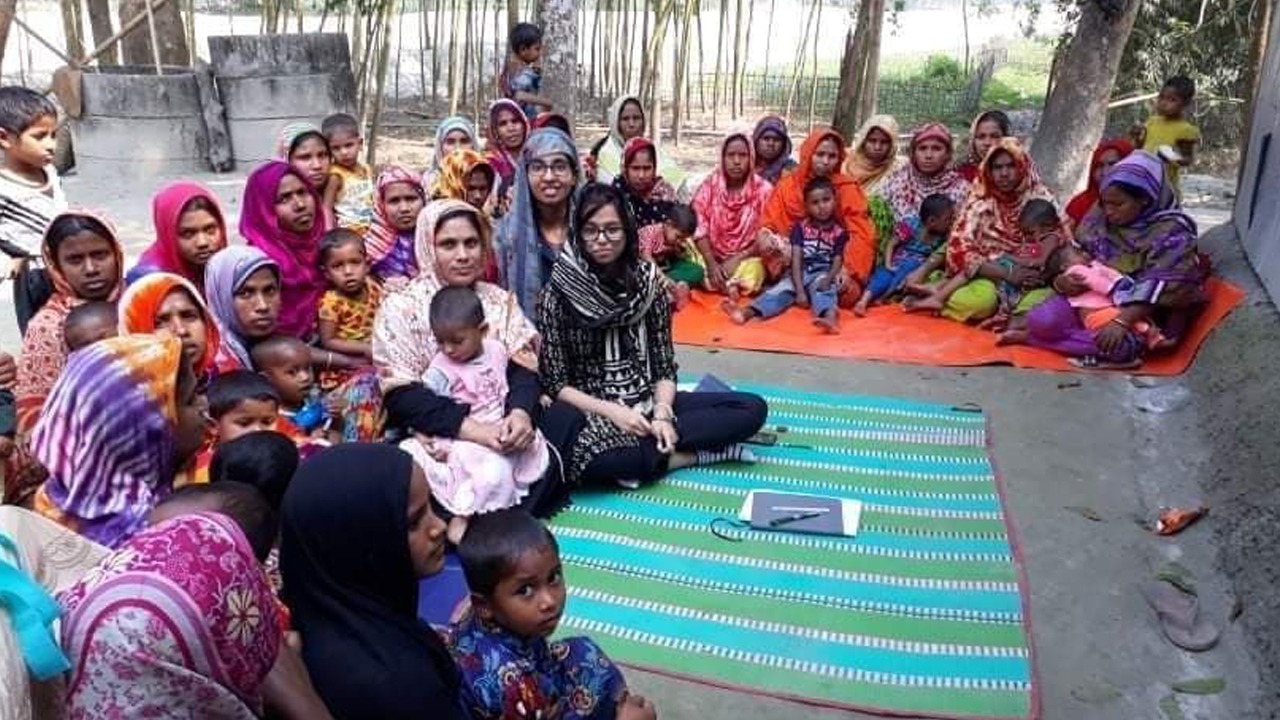GET IN TOUCH
- Please wait...

Inadequate nutrition is one of the key factors behind child mortality in Bangladesh. With high adolescent fertility rate, newborns face poor linear growth and fat depletion, while adolescents themselves face issues such as stunting and underweight. To tackle this dire situation, it is imperative to meet appropriate nutritional requirements in daily meals.
For this purpose, in 2018, CARE launched “Joint Action for Nutrition Outcomes (JANO)“, a 5-year EC-funded project in partnership with Plan International and Eco Social Development Organization (ESDO) and funded by the European Union. The main objective of the JANO project is to address the nutritional needs of children under five years of age, Pregnant and Lactating Women (PLW) and adolescent girls and boys in Rangpur and Nilphamari districts. The project aims to reach all 65 unions in the 7 most vulnerable Upazilas of Rangpur and Nilphamari districts namely, Gangachara, Kaunia, Taraganj, Domar, Jaldhaka, Kishorgonj and Nilphamari Sadar, in order to ensure access to information, and strengthen the services provided.
JANO intends to accomplish this goal via 4 Estimated Result (ER), of which ER 3 aims to increase productivity and income growth through nutrition-sensitive value chains and affordable access of households to nutritious products and services. LightCastle Partners was assigned to assess and select nutrition-sensitive and nutrition-specific value chains which would realize ER 3, can be cultivated using climate-smart technologies at home, and at the same time address target group’s nutrition needs, while significantly involving women and adolescent girls as producers and/or service providers.
To analyze and select food value chains and nutritional value chains, LightCastle Partners utilized a 5-step process consisting of a rigorous combination of qualitative and quantitative tools. The project process consisted of secondary research, expert consultations, data collection, and value chain analysis. Furthermore, a GAP analysis was done to find existing bottlenecks for production and consumption of the selected food and WASH value chains in the targeted zones.

To begin with, a secondary research was conducted to create an overview of the current nutritional status. In particular, the nutritional specific indicators of the target groups and their respective nutritional specific macro and micronutrient requirements were documented. Moreover, nutritional-sensitive components (mainly WASH services) available to the target groups, were also assessed in this manner.
The team then consulted with nutrition experts and the JANO team to gain further insights. This was followed by data collection that consisted of 421 household surveys, Key Informant Interviews (KIIs) with value chain actors and government stakeholders, and Focus Group Discussion (FGDs) with beneficiaries.
All these data inputs were then processed to analyze the value chains by focusing on multiple components, including but not limited to, policy support, forward and backward linkages, private sector engagement landscaping, female involvement in value chains, consumption and cultivation pattern, among others.
Finally, 2 regional workshops and 1 national workshop was conducted to validate the study findings and ease the process of this three-party agreement and bring about the outcome of 9 food (vegetables, fruits, poultry, aquaculture, dairy production, fortified food and crops) and 2 non-food (WASH services) value chains to improve nutrition through homestead production.
JANO, under the leadership of CARE, aims to become a part of the effort to reduce malnutrition of children under the age of five, along with addressing the nutritional needs of Pregnant and Lactating Women (PLW) and adolescent children. This 5-year long project is a medium for a three-party agreement between the government, public and private enterprises in order to implement the National Plan of Action for Nutrition (NPAN)-2. The intended long-term impact of this project is for children to grow up to become healthy adults and reach their full potential, and not be limited by issues stemming from malnutrition.
Our experts can help you solve your unique challenges